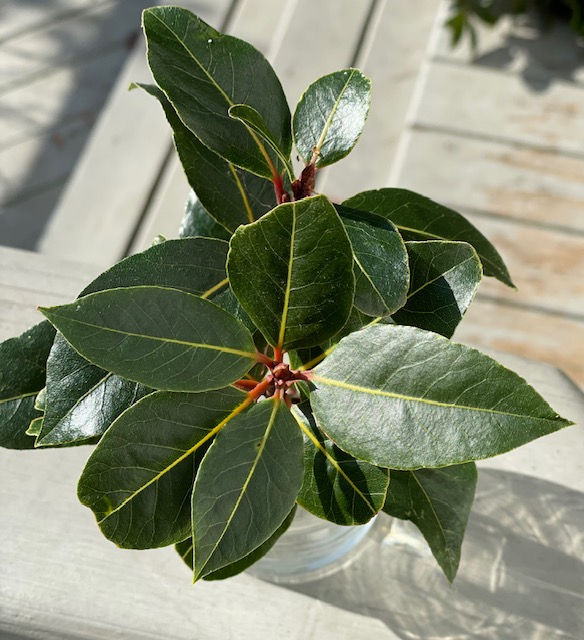Laurus nobilis – Mediterranean Bay
- Ask a Master Gardener

- Apr 27, 2022
- 3 min read
BY: Carol Dorsey, Mobile County Master Gardener www.mobilecountymastergardeners.org
One of the last steps a cook takes before serving gumbo or red beans is to remove the bay leaf. Why? Though an essential background herbal flavoring in these Cajun or Creole dishes, the bay leaf could choke the diner since the leaf does not soften during cooking. Dried bay leaves are added to many soups, stews, meats, and seafood to impart woodsy, floral, and citrusy flavors. What makes these flavors?
Laurus nobilis leaves or Mediterranean bay leaves contain a complex array of organic compounds including tannins, flavonoids, and antioxidants. The myriad of compounds not only flavor our food and smell good, but some demonstrate antimicrobial activity. Historically, bay leaves have been used for wound treatment, tummy troubles, and joint pain in many areas of the world, including Europe, Southeast Asia, and Africa, where the bay laurel is a native plant. Other genera that are used like Laurus nobilis are the North American natives, Umbelliaria california or California bay which is often used fresh, and Magnolia virginiana or Sweetbay Magnolia.
While Larus nobilis is not native to North America, it grows well outdoors in USDA planting zones 8-10. Some sources say the plant is hardy to Zone 5 with protection. Container growing is an option north of zone 8. The culture of this genus of plants is straightforward with well- drained, organic-rich, slightly acidic soil. A two-to-three-inch layer of mulch can moderate soil moisture changes. Laurus cannot tolerate being waterlogged. However, neither does it do well with dry soil, a consideration in container growing. Light requirements are full sun to partial shade in the afternoon.
Pests are not a big problem with an established plant, but scale and aphids can infest the plants. Soft bodied scale looks like small white dots, perhaps a few on the top of the leaf and more on the underside. The leaf-piercing feeding of the scale makes a honeydew food source for sooty mold resulting in a black covering on lower leaves. Identification of the pests and treatment with an organic neem oil solution prepared and sprayed according to the manufacturer’s package directions can keep the scale in check. With these culture basics in mind, your evergreen bay laurel can grow to more than eight feet tall and four feet wide.
What to do with these dark green, glossy leaves? Do as the Greeks! Make a laurel wreath for someone who has been victorious or honorable. Since ancient times, the laurel wreath, also known as laurels, shaped into a circle or horseshoe from fresh leaves and branches, have been a symbol of respect, thus a “laureate,” as in Nobel laureate or poet laureate, who do not “rest on their laurels.”
For cooking applications, however, it is better to dry the bay leaves prior to use. Fresh laurel bay can be bitter, but drying the leaves mellows the bitterness and concentrates the flavor compounds. Drying the leaves can be as simple as laying individual leaves on towels out of direct sunlight in a ventilated area for a couple of weeks turning them over after the first week. If using a dehydrator, leaves could be dry in less than four hours. Dehydrate until the leaves are brittle with no soft, bendable areas. Store the leaves in an airtight container for up to one year.
When you serve your victors a pot of gumbo deliciously seasoned with homegrown bay leaves, also give them a laurel and hardy handshake. Then you can celebrate your culinary prowess and growing abilities with the addition of Laurus nobilis, Mediterranean bay, in your garden.




Comments